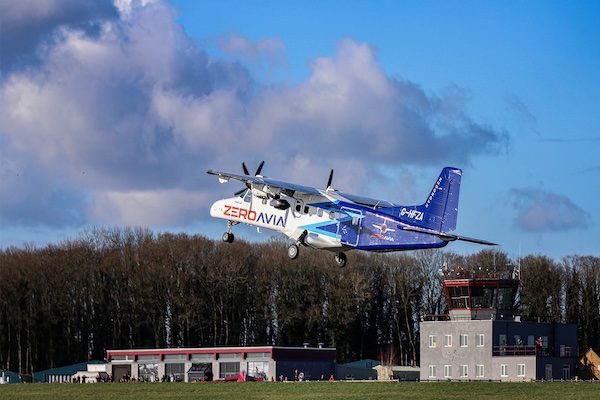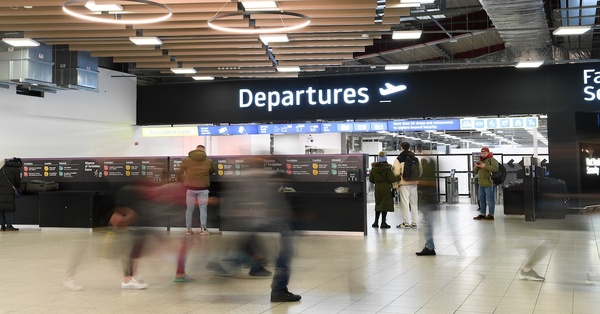You are viewing 1 of your 2 free articles
Zero-emission flight milestone claimed by 19-seat aircraft
A breakthrough in zero-emission flying is being claimed with the largest aircraft in the world taking to the skies powered by a hydrogen-electric engine.
A 19-seat Dornier 228 testbed aircraft retrofitted, with a full-size prototype hydrogen-electric engine on its left wing and jet fuel-powered turboprop on the other, flew for ten minutes from Cotswold airport in Kemble, Gloucestershire.
The test flight was conducted by Anglo-US start-up ZeroAvia, which is backed by British Airways, United Airlines and Shell, and has received an engine order from American Airlines.
The milestone moves the firm forward on the way to meeting a target of commercial flights using only hydrogen fuel cell power by 2025, and scaling the engine technology to larger aircraft.
ZeroAvia is initially targeting a 300-mile range in 9-19 seat aircraft in two years time and up to 700-mile range in 40-80 seat aircraft by 2027.
The next stage will see the clean engine technology scaled up to test on up to 90-seat aircraft with further expansion into narrow-body aircraft demonstrators over the next decade.
The Dornier 228 will conduct a series of test flights from Kemble and later demonstration flights from other airports.
Company founder and chief executive Val Miftakhov said: “This is a major moment, not just for ZeroAvia, but for the aviation industry as a whole, as it shows that true zero-emission commercial flight is only a few years away.
“The first flight of our 19-seat aircraft shows just how scalable our technology is and highlights the rapid progress of zero-emission propulsion.
“This is only the beginning – we are building the future of sustainable, zero climate impact aviation. Our approach is the best solution to accelerate clean aviation at scale.”
ZeroAvia conducted the first of more than 30 flights of a six-seat Piper Malibu aircraft using a 250kW hydrogen-electric engine almost exactly two years ago.
Business secretary Grant Shapps described the flight as “a hugely exciting vision of the future – guilt-free flying and a big step forward for zero-emission air travel”.


















